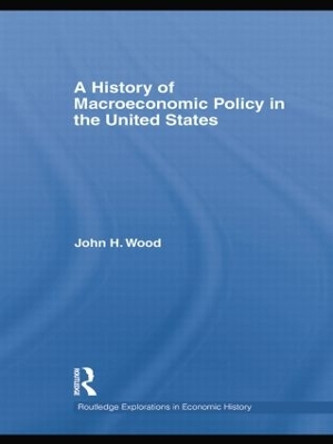Description
This 2005 treatment compares the central banks of Britain and the United States.
About the Author
John H. Wood is R. J. Reynolds Professor of Economics at Wake Forest University, Winston-Salem, North Carolina. He has also taught at the Universities of Birmingham, Pennsylvania, and Singapore and at Northwestern University. A Life Fellow of Clare Hall, Cambridge, and a Visiting Fellow of the American Institute for Economic Research, Professor Wood has also been a full-time or visiting economist at the Federal Reserve Board and the Federal Reserve Banks of Chicago, Dallas, and Philadelphia. His earlier studies of central banking include in 1967 the first application of the theory of economic policy to Federal Reserve behavior.
Reviews
'The forces and personalities shaping the development of central banking are carefully detailed in this excellent and readable book on central banking in the United States and Great Britain.' Lee Hoskins, Former President, Federal Reserve Bank of Cleveland
'The book is an ambitious and successful undertaking. It should be required reading for anyone concerned with monetary institutions and the battle between rules and discretion in policymaking. John H. Wood makes clear that the conflicts between rules and discretion will continue, and through his deft historical analysis he reminds us that the choices we make today will have important consequences for the future.' Edward Prescott, Nobel Laureate, Federal Reserve Bank of Minneapolis
'By bringing the pieces together and focusing on the evolution of central bankers this book enables the reader to see the forest rather than the trees and to appreciate one of the successes of economics. This book will be a useful resource for both economic historians and monetary economists looking for a broad overview of the evolution of Anglo-American central banking and monetary theory.' Angela Redish, EH.Net
'Economists and ordinary people have always found it difficult to understand central bankers. John H. Wood here provides a reason: central bankers themselves quite often did not fully understand their functions and the impacts of their decisions on macroeconomic outcomes. That finally has changed, Wood argues, because central banks now appear to have a 'contract' to provide price-level stability, and they can deliver on it. But the contract may be tenuous, as it is subject to political exigencies. Wood's rich history of British and American experience thus prepares us to think seriously about the future of central banking.' Richard Sylla, New York University
'John Wood has undertaken the ambitious and novel task of retelling the old story of central banking by juxtaposing the histories of the Bank of England and the Federal Reserve, including its precursors, with the object of revealing the similarities and diversities of the challenges as well as their responses. A distinctive and singular achievement.' Elmus Wicker, Indiana University
'The book does an excellent job in providing a coherent, detailed and readable account of the forces and personalities that have shaped the development of central banking in Britain and the United States.' Central Banking
'This is a well-written, highly readable book ... Throughout the book, Wood makes excellent use of his (mostly published) sources. He quotes extensively - often the quotes tell the story more or less by themselves - and he cleverly juxtaposes quotes from different eras, thereby demonstrating that time and circumstances may change but the basic issues in central banking by and large remain the same. ... In short, Wood's book offers a catalogue of central banking theory brought to life through a vivid depiction of more than two centuries of central banking practice.' Financial History Review
Book Information
ISBN 9780521850131
Author John H. Wood
Format Hardback
Page Count 456
Imprint Cambridge University Press
Publisher Cambridge University Press
Weight(grams) 727g
Dimensions(mm) 235mm * 162mm * 34mm








